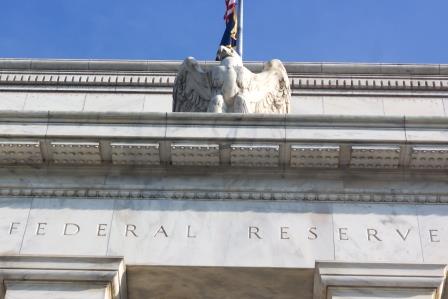“If making monetary policy is like driving a car, then the car is the one with an unreliable speedometer, a foggy windshield and tendency to respond unpredictably and with a delay to the brake and the accelerator.”
– Ben Bernanke
Implementing monetary policy to produce the desired results is a challenging task. The task becomes Herculean when the economy and markets face too many headwinds in a volatile and turbulent environment.
The foremost factor determining the direction of equity markets globally in the coming weeks and months will be the intensity of the monetary tightening by the Fed and its impact on the US economy and, thereby, on the global economy. The Fed has been decisively proved wrong in its ‘transient inflation’ theory with inflation remaining persistent and rising to 8.5 percent in March. Coming from behind the curve, the Fed has started the rate raising cycle with a 25 bps hike in March and has followed it up with a 50 bps hike in May. The Fed chief has clearly indicated that the next two rate hikes would be by 50 bps each and ruled out the possibility of a 75 bps rate hike. Five more rate hikes are likely in 2022 followed by three more in 2023. The terminal rate can be around 3 percent by end 2023 and stay there through 2024. This trajectory may change depending on the incoming data and evolving economic outlook.
The problem with aggressive monetary tightening is that the interest rate is a blunt instrument that will not be very effective in taming inflation triggered by supply-side issues. Supply chain disruptions caused by the stringent lockdowns in China and commodity price hikes triggered by the Ukraine war have contributed to the recent spurt in inflation. High cash balances with households and businesses, thanks to the massive fiscal stimulus, also has played a role in the current bout of inflation in the US. Since unemployment is very low at 3.6 percent and labour participation rate is low, wages are rising fast with the risk of a wage-price spiral. Inflation expectations are high and the only way inflation can be tamed is by anchoring inflation expectations through rate hikes. A series of rate hikes spread over a year or more can signal that the Fed is serious about inflation control. This can temper inflation expectations, temper wage hikes and bring inflation under control.
The Fed has declared a mix of policy actions – rate hikes and normalization of its $9 trillion balance sheet. The balance sheet run-off involves quantitative tightening to be implemented by reducing the Fed’s holding of securities by $47.5 billion a month starting from June and rising to $ 90 billion in September.
The million dollar question is: Will the Fed succeed in soft landing the economy? That is, taming inflation without triggering a recession or sharp economic downturn. Here, the Fed’s track record is mixed. There has been 13 Fed rate hike cycles since World War II. Most monetary tightening cycles ended up sharply slowing down the economy, even landing the economy in recessions. Paul Volker’s aggressive rate hikes – from 11 percent in June 1979 to 20 percent in June 1981 – did break the back of inflation but pushed the economy into recession. There has been successful soft landings, too, the most famous one being the one engineered by Allen Greenspan. Greenspan raised interest rate from 3 percent to 6 percent in 1994 without triggering recession.
Implications for the market The message from the Fed is very clear. The era of cheap and ample money is over. It is important to appreciate the fact that humungous liquidity has played an important role in the global bull rally that began after the market crash of March 2020. From now on liquidity will decline and money will be costlier. This is not good news for equity markets. However, the performance of markets would depend crucially on whether the US economy would slip into recession, say in 2023, and its impact on the global economy. If the Fed succeeds in engineering a soft landing, equity markets will bounce back. If not a downward grind is a possibility. Investors should watch out for the straws in the wind.
First published in Economic Times









